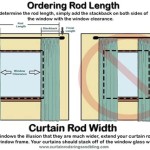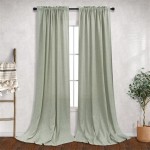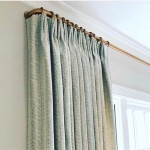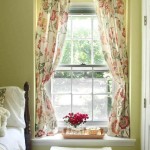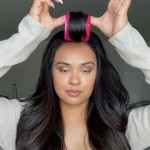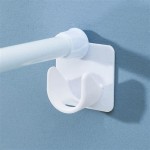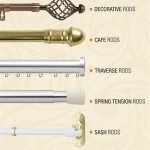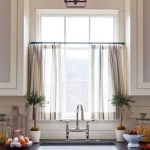Curtains That Block Out the Sun: A Comprehensive Guide
Sunlight, while essential for life, can sometimes be an unwelcome intrusion into the home. Excessive sunlight can fade furniture, damage artwork, increase indoor temperatures, and disrupt sleep patterns. Curtains designed to block out the sun offer a versatile solution to these problems, providing control over the amount of light entering a room, while also offering benefits like insulation and privacy. This article explores the world of sun-blocking curtains, examining their materials, mechanisms, construction, and the specific benefits they provide. This knowledge empowers informed choices when selecting the ideal sun-blocking curtains for any space.
The term "curtains that block out the sun" encompasses a range of light-reducing window treatments. These curtains are more than just aesthetically pleasing fabric panels; they are engineered to minimize light penetration. While no curtain can achieve absolute darkness, the most effective options can create a significant reduction in light, approaching near-blackout conditions. The level of light blockage depends on several factors, including the fabric type, construction techniques, color, and the presence of specialized linings or coatings.
Understanding the different types of sun-blocking curtains involves considering the materials used in their construction. Some materials are inherently better at blocking light than others. Dense weaves and opaque fabrics are key to achieving optimal light control. Furthermore, specialized treatments and linings greatly enhance the light-blocking capabilities of these curtains.
Fabric and Material Considerations
The primary material of a curtain is the first line of defense against sunlight. Certain fabrics possess inherent properties that make them more effective at blocking light. These fabrics are typically heavier, denser, and less likely to allow light to pass through their fibers.
Blackout Fabrics: These are the gold standard for sun blocking. Blackout fabrics are specifically designed to minimize light transmission. They are often made of multiple layers, including a dense, tightly woven face fabric and a separate blackout lining. The lining is usually composed of a material like acrylic foam or a dark-colored fabric that absorbs and reflects light.
Dimout Fabrics: Dimout fabrics offer a moderate level of light reduction, falling between sheer curtains and blackout curtains. They are often made of tightly woven synthetic fibers or blends that effectively filter sunlight. Dimout curtains are suitable for situations where complete darkness is not required but where a significant reduction in light is desired.
Heavyweight Natural Fabrics: Fabrics like velvet, thick cotton duck, and wool can provide substantial light blocking due to their weight and density. While these materials may not achieve the same level of darkness as specialized blackout fabrics, they can be effective in reducing glare and filtering sunlight. The natural texture and drape of these materials can add a luxurious feel to a room.
Synthetic Fabrics: Some synthetic fabrics, such as microfiber and polyester, can be woven very tightly to create a dense, light-blocking barrier. These fabrics are often more affordable and easier to care for than natural fabrics. They are also resistant to fading and shrinking, making them a practical choice for sun-exposed windows.
The color of the fabric also plays a significant role in light blockage. Darker colors, such as black, navy blue, and deep red, absorb more light than lighter colors. Therefore, darker curtains are generally more effective at blocking out the sun. Lighter colors, such as white, beige, and pastel shades, tend to reflect light, allowing more of it to pass through. While lighter-colored curtains can still provide some degree of light reduction, they are not as effective as their darker counterparts.
Construction and Design Techniques
The way a curtain is constructed can significantly impact its ability to block out the sun. Seams, pleats, and the overall design of the curtain can create gaps through which light can penetrate. Therefore, careful attention to construction details is essential for achieving optimal light control.
Tight Weaves: As mentioned previously, tightly woven fabrics are crucial for minimizing light transmission. The tighter the weave, the smaller the gaps between the fibers, and the less light can pass through. This principle applies to both natural and synthetic fabrics.
Multiple Layers: Layering fabrics is an effective way to enhance light blocking. This can be achieved by using curtains with multiple layers of fabric or by layering curtains with other window treatments, such as blinds or shades. The multiple layers create a barrier that reduces the amount of light that can enter the room.
Linings: The addition of a lining to a curtain can significantly improve its light-blocking capabilities. Linings are typically made of a dense, opaque fabric that is attached to the back of the curtain. Blackout linings are the most effective, but even a simple dimout lining can make a noticeable difference.
Interlinings: An interlining is a layer of fabric that is placed between the face fabric and the lining. Interlinings add extra insulation and can further enhance light blocking. They also help to improve the drape and appearance of the curtain.
Grommets and Rod Pockets: The way a curtain is hung can also affect its ability to block out the sun. Grommets and rod pockets can create small gaps at the top of the curtain, allowing light to seep through. To minimize these gaps, it is important to choose a rod that fits snugly against the wall and to use decorative rings or clips to hold the curtain in place.
Overlapping Panels: Using multiple curtain panels that overlap each other can help to eliminate gaps and prevent light from entering the room. This technique is particularly effective for wide windows or sliding glass doors.
Side Returns: Side returns are fabric extensions that wrap around the sides of the window frame, preventing light from leaking in from the sides. These are particularly useful for achieving near-blackout conditions.
Benefits of Using Sun-Blocking Curtains
Beyond simply reducing the amount of light entering a room, sun-blocking curtains offer a range of benefits that can enhance the comfort and functionality of a living space. These benefits include improved sleep quality, energy savings, and protection for furniture and artwork.
Improved Sleep Quality: Light exposure can interfere with the body's natural sleep-wake cycle. Sun-blocking curtains create a darker and more conducive environment for sleep, which can promote better sleep quality and duration. This is particularly beneficial for shift workers, light-sensitive individuals, and those who live in areas with high levels of light pollution.
Energy Savings: Sun-blocking curtains can help to reduce energy consumption by insulating the room from heat gain in the summer and heat loss in the winter. By blocking out the sun's rays, these curtains can keep a room cooler in the summer, reducing the need for air conditioning. Conversely, in the winter, they can help to retain heat, reducing the need for heating. This can lead to significant savings on energy bills.
Protection for Furniture and Artwork: Prolonged exposure to sunlight can fade and damage furniture, artwork, and other valuable items. UV rays can break down the dyes and pigments in fabrics and paints, causing them to lose their vibrancy and color. Sun-blocking curtains provide a protective barrier that shields these items from damaging sunlight, helping to prolong their lifespan and maintain their appearance.
Enhanced Privacy: In addition to blocking out light, sun-blocking curtains also provide enhanced privacy. They prevent outsiders from being able to see into the room, offering a sense of security and seclusion. This is particularly important for bedrooms, bathrooms, and other private spaces.
Noise Reduction: Some sun-blocking curtains, especially those made of thick, heavy fabrics, can also help to reduce noise levels from outside. The fabric absorbs and dampens sound waves, creating a quieter and more peaceful environment inside the room. This can be beneficial for individuals who live in noisy areas or who are sensitive to sound.
Aesthetic Appeal: Sun-blocking curtains are available in a wide range of styles, colors, and patterns, allowing them to complement any décor. They can add a touch of elegance, sophistication, or playfulness to a room, depending on the design. They can also be used to create a specific mood or ambiance, such as a cozy and inviting atmosphere or a sleek and modern look.
Selecting the right sun-blocking curtains requires careful consideration of several factors, including the desired level of light control, the size and shape of the windows, the style of the room, and the budget. Understanding the different types of fabrics, construction techniques, and benefits of sun-blocking curtains is essential for making an informed decision.
Proper installation and care are also important for maximizing the effectiveness and longevity of sun-blocking curtains. Ensure the curtains are hung correctly to minimize gaps and allow for proper light blockage. Regular cleaning and maintenance will help to keep the curtains looking their best and prevent them from fading or deteriorating.
Ultimately, curtains that block out the sun offer a practical and stylish solution for controlling light, enhancing comfort, and protecting valuable items in the home. By carefully considering the various factors involved, individuals can choose curtains that meet their specific needs and preferences, creating a more enjoyable and functional living space.

Sun Zero Dickenson Navy Blue Polyester 37 In W X 84 L Grommet 100 Blackout Curtain Set Of 2 64157

A Pair Of Extra Thick Sun Block Sheer Curtains With Stripe Café Tulle Custom Made Privacy Etsy

Sun Zero Alna Theater Grade White Polyester 52 In W X 84 L Rod Pocket 100 Blackout Curtain Single Panel 63564

Thermal Insulated Sun Block Out Curtain Pair Ready Made Eyelet Ring Top 3 Pass

Deconovo Thermal Insulated Blackout Curtains 52x54 In Burlywood 2 Panels Wal Com

Thermal Insulated Sun Block Out Curtain Pair Ready Made Eyelet Ring Top 3 Pass

Deconovo 100 Blackout Curtains Sunlight Noise Cancelling Energy Saving 2 Panels 52x54 In Light Gray Wal Com

Blackout Curtains And Other Effective Ways To Block Out The Sun

Sun Zero Plum Solid Rod Pocket Room Darkening Curtain 54 In W X 63 L 43181 The Home

Whole Blackout Modern Sun Block Emboss Plain Color Window Curtain Fabric Black Out And Made In China Com

